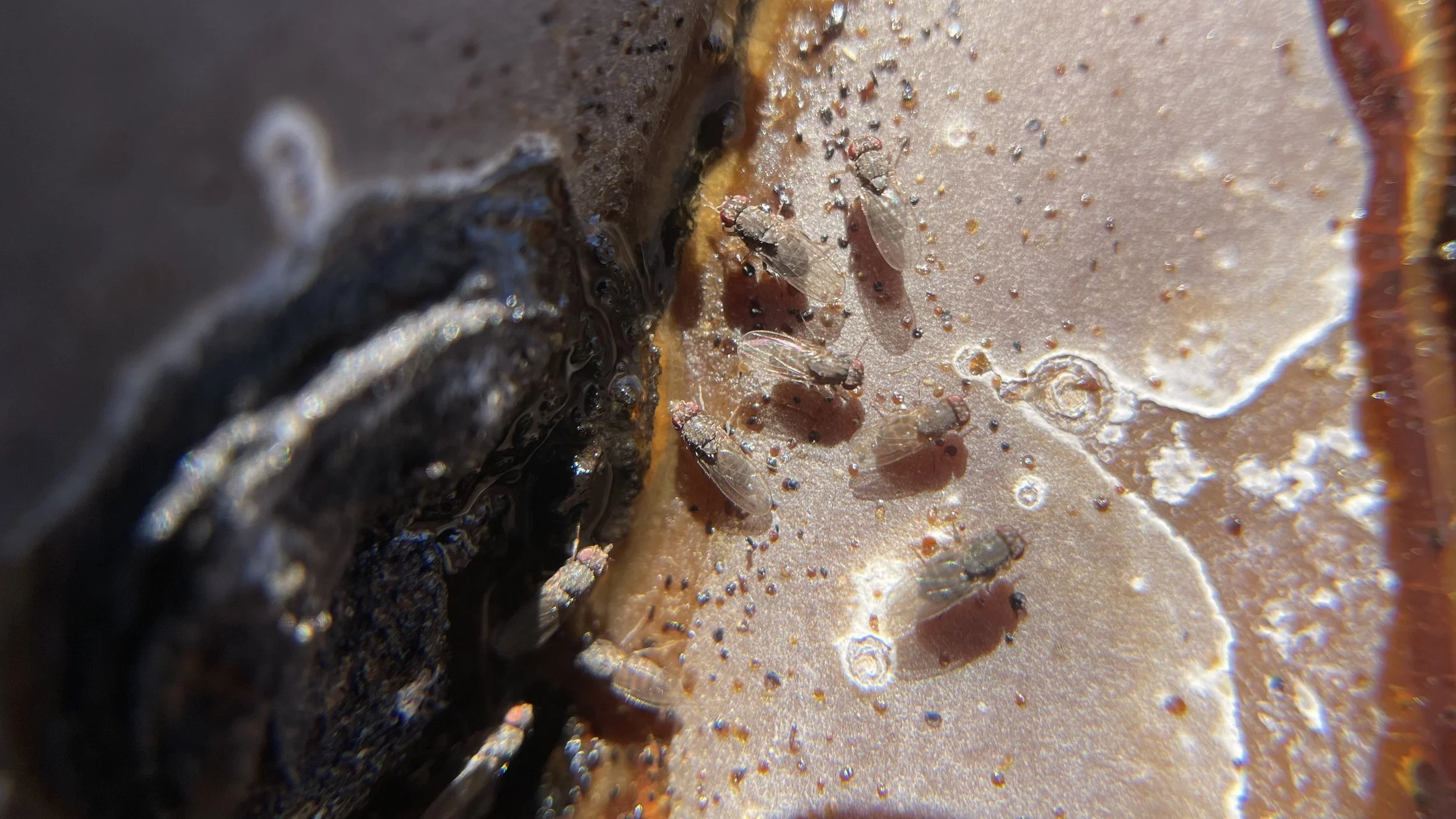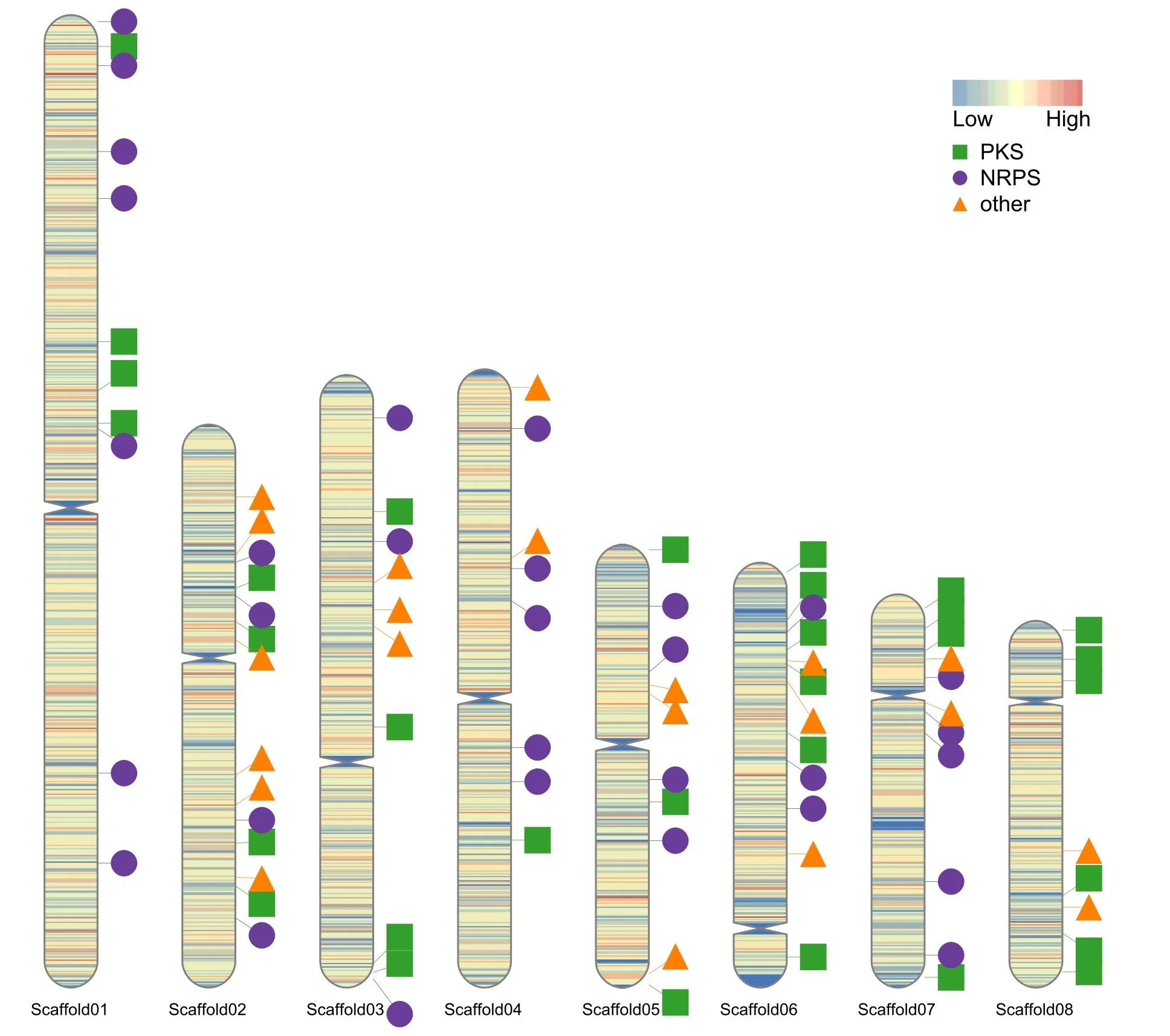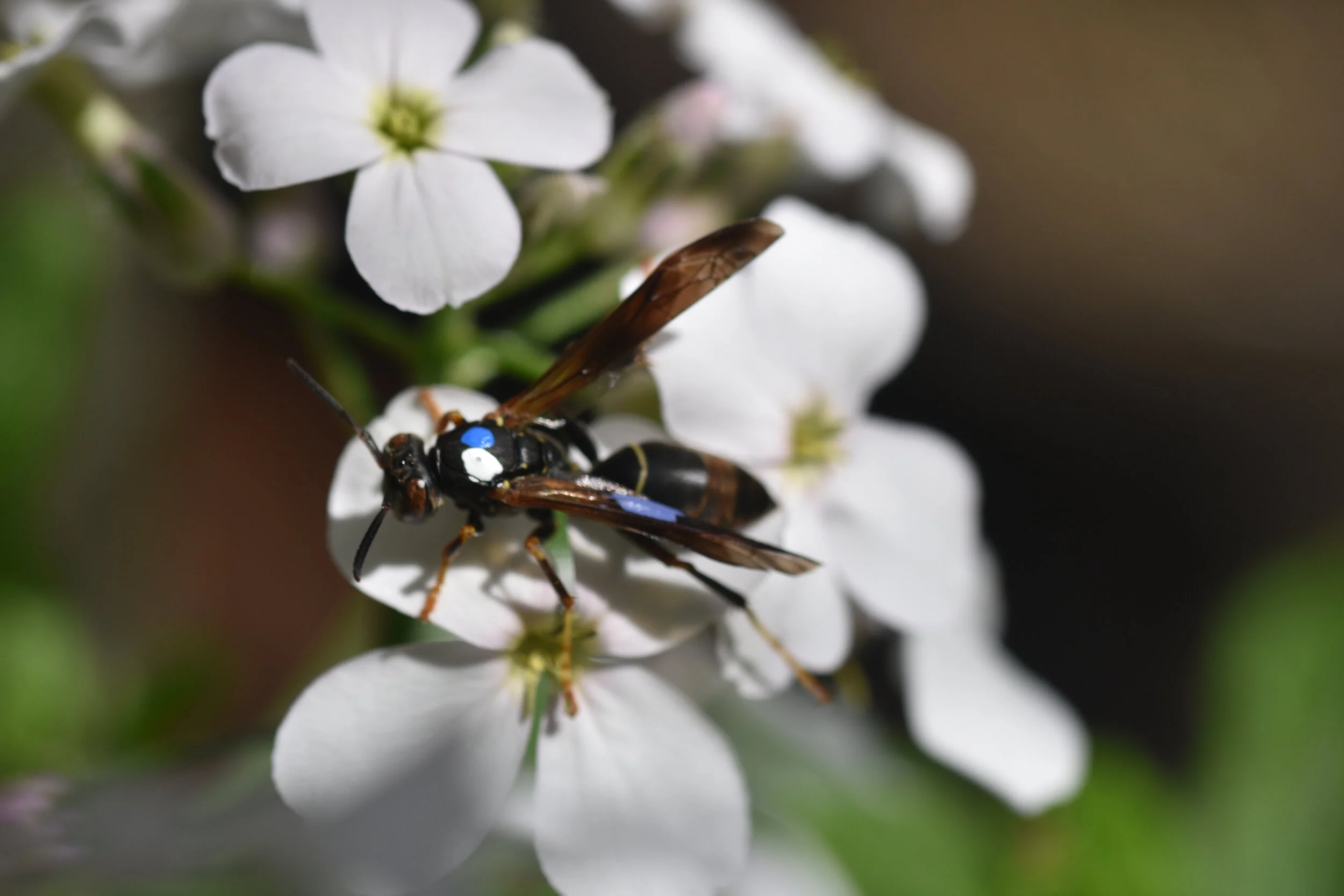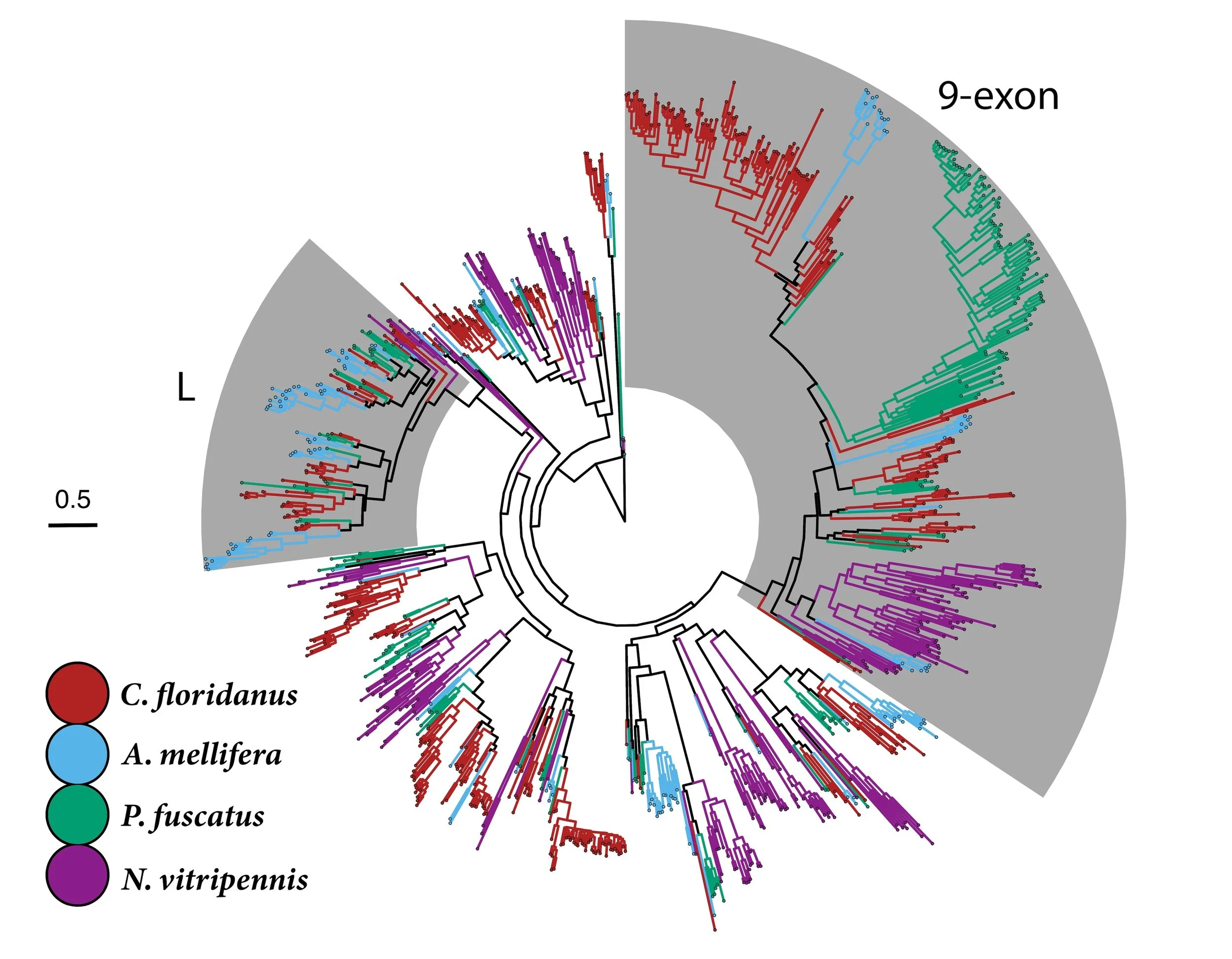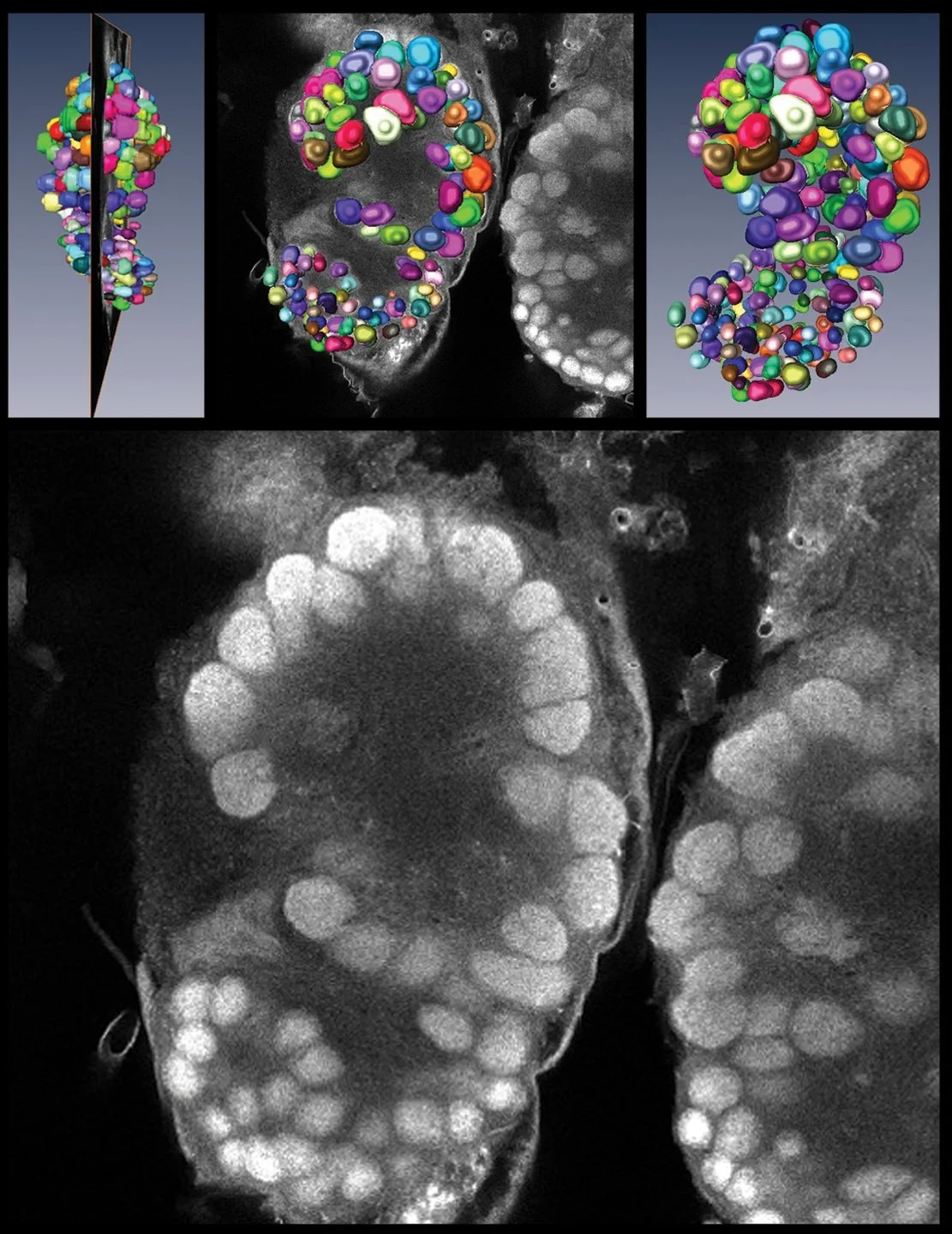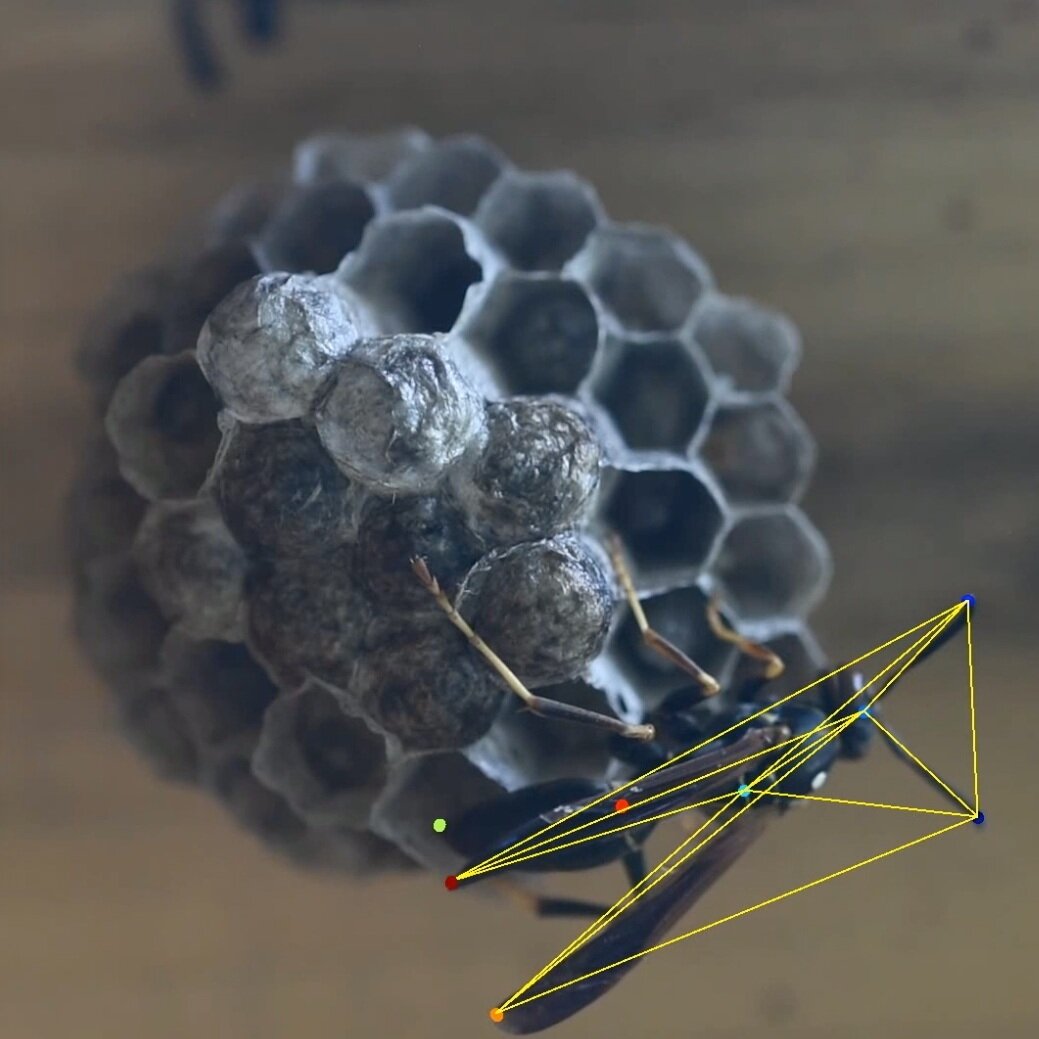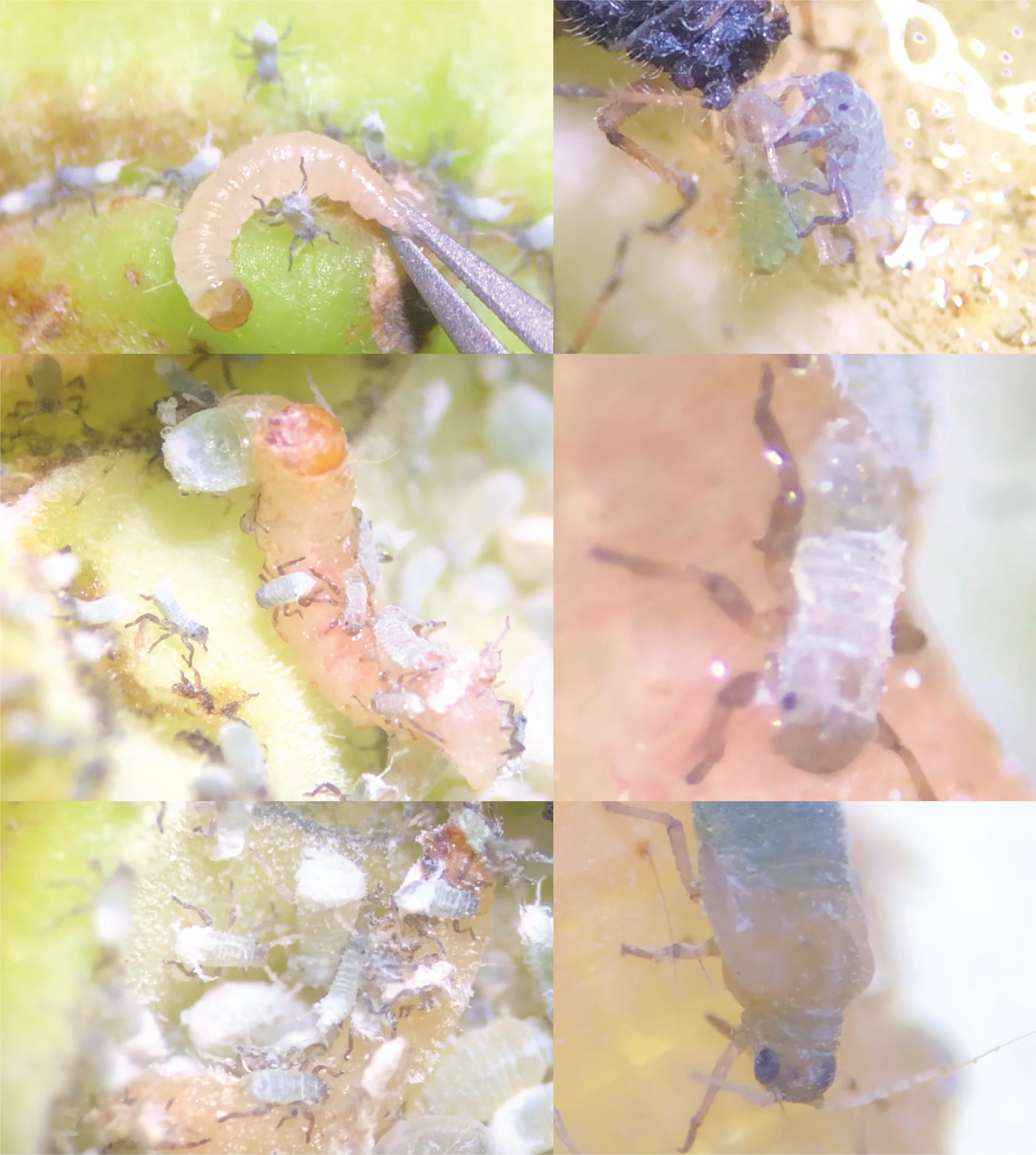Below you can find broad descriptions of my research projects:
How do insect genomes encode their abilities to design, detect, and detoxify chemicals?
With support from the National Science Foundation Postdoctoral Research Fellowship Program in Biology (PRFB), I am researching insect genomics and chemical ecology at the University of Arizona. Projects include evolution of pesticide resistance (recently published in PNAS), the first genome assembly from a tarantula hawk wasp (telomere to telomere!), and evolution of detoxification and olfaction in cactophilic Drosophila species in the Sonoran Desert. The images below shows one of the species I study, Drosophila nigrospiracula, feeding at a saguaro rot in Tucson:
How do fungus genomes encode complex secondary metabolite repertoires?
In a previous postdoc supported by the Oak Ridge Institute for Science and Education (ORISE) at the US Department of Agriculture - Agricultural Research Service, I generated and analyzed genomes of Aspergillus species to better understand how the chemicals they produce, in particular aflatoxins, are encoded in their genomes.
A very convenient thing about fungus genomes is their tendency to package together in close proximity many unrelated genes involved in the same biosynthesis pathway. This work has been published in G3: Genes|Genomes|Genetics, and Microbiology Resource Announcements (AF36 PCR-cDNA sequencing; A. flavus La3279 genome).
Here is a visualization of gene density and locations of secondary metabolite biosynthesis gene clusters along the scaffolds of one of our highly complete genome assemblies generated from combining short and long-read DNA sequencing:
How did wasps evolve a chemical language?
As a graduate student supported by the NSF Graduate Research Fellowship Program in the Department of Neurobiology and Behavior at Cornell University, I investigated the mechanisms and evolution of olfactory recognition behavior in social wasps. I focused on nestmate recognition in Polistes paper wasps.
In the field, I sampled the chemical phenotypes of individual wasps for their entire lifetimes to learn more about the ontogeny of chemical recognition cues (primarily cuticular hydrocarbons, or CHCs). I also made tissue-specific RNA-seq libraries from different “castes” (i.e. queens vs. workers vs. reproductive females a-k-a “gynes”) to learn how CHC variation arises from the action of biosynthesis genes.
In addition to studying the production of chemicals in Polistes, I also studied the perception of these chemicals. I annotated the odorant receptor (OR) gene repertoires in the genomes of five Polistes species, uncovering large copy number, rapidly evolving receptors (Legan et al. 2021 MBE).
Below is a gene tree of amino acid sequences of odorant receptors from one Polistes species and three other Hymenopterans:
This numerous odorant receptor genes in Polistes are mirrored by the neuroanatomy of the antennal lobe, which has about the same number of glomeruli (nerve bundles) as OR genes in the genome:
I am also interested in complementing molecular mechanistic approaches with behavioral analyses. At the Liddell Field Station, I used digital tracking to quantify how wasp posture changes in response to simulated social challenges, informing hypotheses about how vigilance behavior influences nestmate recognition (in Ecology & Evolution).
Lesser known social insects are fascinating examples of independent origins of social behavior. As an undergraduate researcher at Vanderbilt University, and later as a National Geographic Explorer, I studied social behavior in gall-forming aphids.
These tiny herbivores evolved defensive behavior by using their plant-feeding mouthparts to attack predators, even deploying venom (Lawson et al. 2017 Evolution).
In the gall-forming aphid Mordwilkoja vagabunda, I documented defensive behavior for the first time in this species (Legan 2022 Ecosphere). The aphids also displayed a synchronized twitching behavior that you can see on YouTube here (and in the manuscript videos here).
In another gall-forming aphid species, Pemphigus populicaulis, I am investigating behavioral and chemical defense mechanisms. In this species, an elite few soldiers defend the pore-like opening of the gall:
